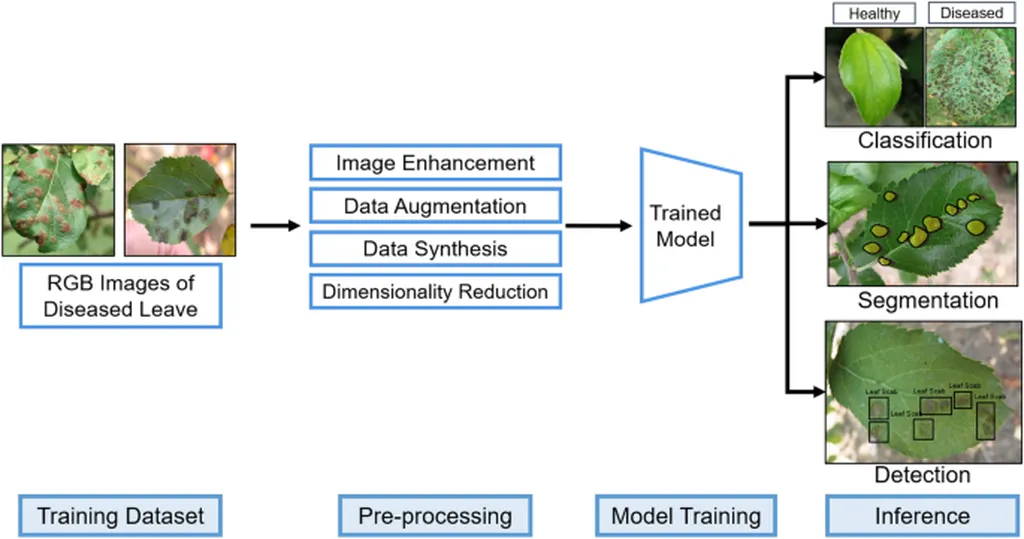In the ever-evolving landscape of precision agriculture, a groundbreaking study published in *Computer Assisted Methods in Engineering and Science* is set to revolutionize how we identify and monitor tobacco plants. The research, led by M.T. Thirthe Gowda from the Government Engineering College Hassan and Malnad College of Engineering, introduces a hybrid texture and gradient modeling approach for dynamic background subtraction, a technique that could significantly enhance the accuracy of plant disease identification systems.
The complexity of detecting plants as objects of interest in vision-based sequences is well-known, with nonlinear background objects like rocks and shadows posing significant challenges. Traditional background subtraction (BS) methods often struggle with pixel intensity variations caused by illumination changes, blurs, and poor video quality. Gowda’s innovative approach addresses these issues by combining invariant texture measures and color attributes to model the background more effectively.
“Our method yields finite precision accuracy compared with other state-of-the-art detection methods,” Gowda explained. The study’s experimental evaluation on two datasets demonstrated superior performance over existing spectral-domain disease identification models, highlighting the potential for more reliable and efficient plant monitoring.
The implications for the agriculture sector are substantial. Accurate and dynamic background subtraction can lead to earlier detection of plant diseases, reducing crop losses and improving yield. The integration of 5G data services further enhances the system’s capabilities, enabling real-time data access and analysis through IoT and edge computing terminals. This seamless data flow can support farmers and agronomists in making timely, data-driven decisions, ultimately boosting productivity and sustainability.
Gowda’s research not only advances the field of precision agriculture but also paves the way for future developments in plant health monitoring. As the agriculture industry continues to embrace technological innovations, such advancements are crucial for meeting the growing demand for food while ensuring environmental sustainability.
The study’s findings were published in *Computer Assisted Methods in Engineering and Science*, underscoring its significance in the scientific community. With the potential to transform agricultural practices, this research marks a pivotal step forward in the integration of advanced technologies in farming.

